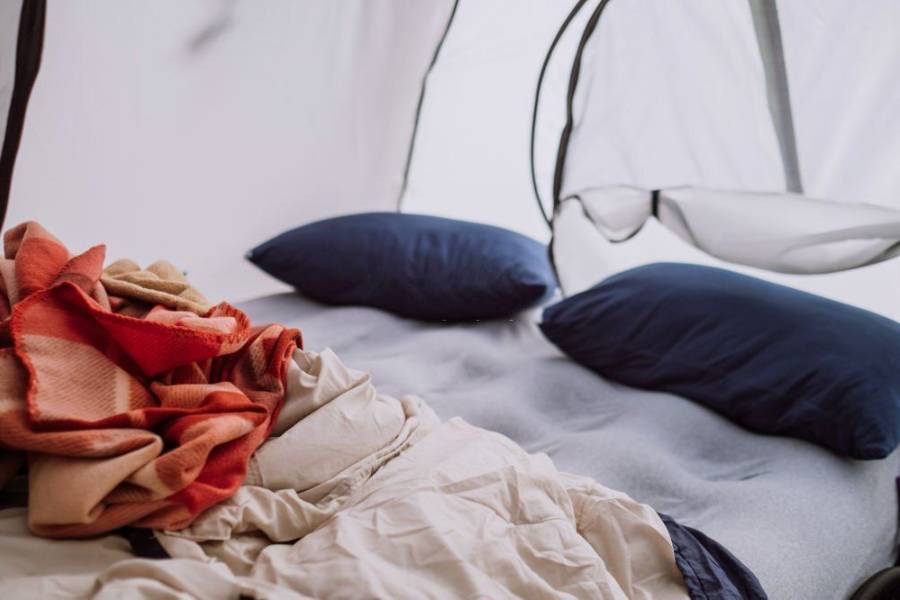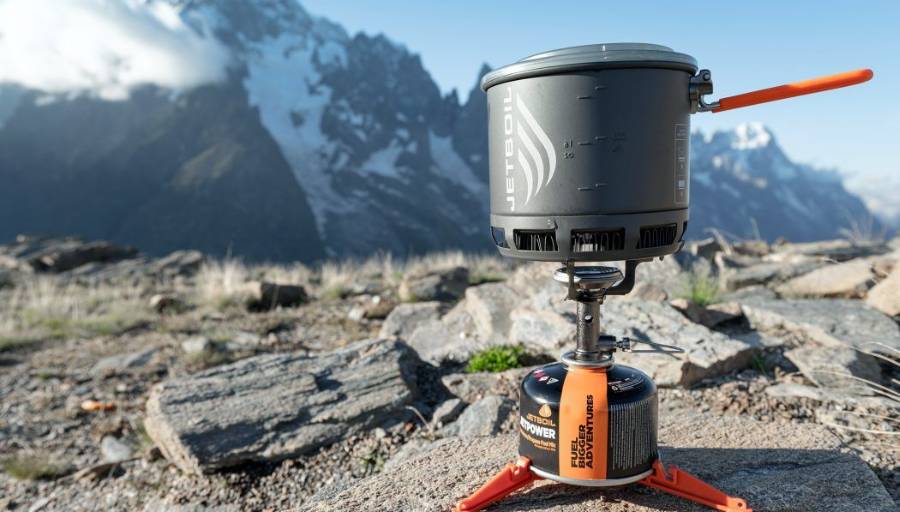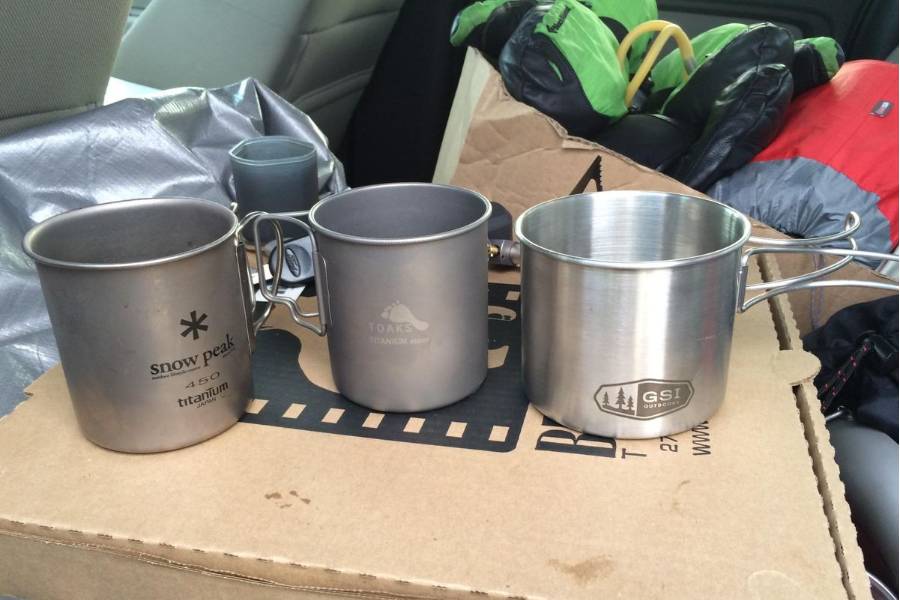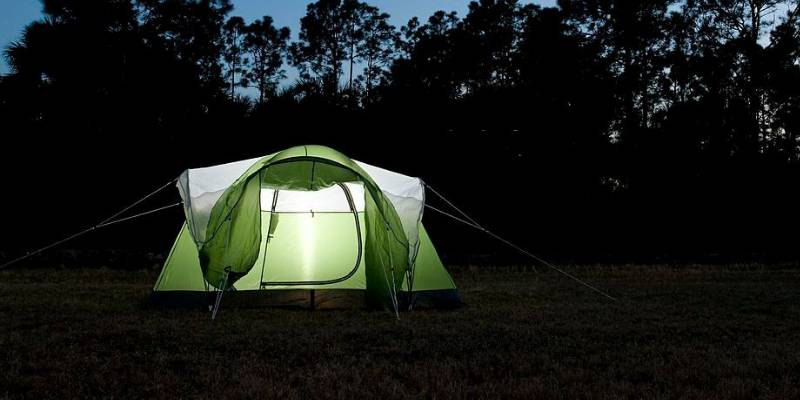The 7 Best Sleeping Pad for Side Sleepers
Getting a good night’s sleep can be challenging, especially if you’re a side sleeper. We all know waking up with sore hips or a stiff back is not fun. And it can put a real damper on your adventure. But here’s the good news—you don’t have to sacrifice comfort when camping or backpacking. With the right sleeping pad, you can sleep just as well under the stars as you do in your bed. I’m here to help you find the best sleeping pad for side sleepers.

1. Therm-a-Rest NeoAir XTherm
Tech Specs:
- R-Value: 6.9
- Weight: 15 oz (regular)
- Thickness: 2.5 inches
- Material: 30D rip HT nylon
- Packed Size: 9 x 4 inches
The Therm-a-Rest NeoAir XTherm is a groundbreaker for side sleepers, especially if you’re moving into colder climates. With its reflective ThermaCapture technology, this pad shines at retaining heat, making it perfect for year-round backpacking trips. I love this one because it is warm and supportive, yet still lightweight. Though it’s on the higher end price-wise, the performance justifies it for anyone tackling cold-weather treks.
Pros:
- Incredible insulation for cold weather
- Extremely lightweight and compact
- Comfortable despite its thin design
- Value for the money
Cons:
- Slight crinkling noise when moving
2. Nemo Tensor Insulated Sleeping Pad
Tech Specs:
- R-Value: 4.2
- Weight: 15 oz (regular mummy)
- Thickness: 3 inches
- Material: 20D polyester
- Packed Size: 8 x 3 inches
The Nemo Tensor Insulated sleeping pad is a favorite for those who prioritize comfort above all else. With its 3 inches of thickness, this pad offers excellent cushioning for side sleepers by eliminating pressure points. It’s also one of the quieter sleeping pads on the market, which makes it perfect for light sleepers who toss and turn. You’ll love the plush feel. However, be cautious with sharp rocks.
Pros:
- Thick and supportive for side sleepers
- Lightweight for its size and insulation
- Packs down very small
- Quiet, unlike many air pads
Cons:
- Not as durable for rough terrain
- Inflation takes a little effort
3. Sea to Summit Ether Light XT Insulated
Tech Specs:
- R-Value: 3.2
- Weight: 15.5 oz (regular)
- Thickness: 4 inches
- Material: 30/40D nylon
- Packed Size: 5.5 x 9 inches
The Sea to Summit Ether Light XT is ideal for those who enjoy plush comfort while camping. It offers a luxurious sleep experience, perfect for those who toss and turn. Its unique Air Sprung Cell design gives a cushy, mattress-like feel. This pad maintains loft even after repeated use, offering consistent comfort night after night. It isn’t the warmest for deep winter, but for 3-season camping, it’s a winner in comfort.
Pros:
- Very thick, ideal for side sleepers
- Comfortable soft like a mattress
- Quiet material
- Reasonable weight for backpacking
Cons:
- On the larger side when packed
- Could be warmer in colder climates
4. Big Agnes Insulated Q-Core Deluxe
Tech Specs:
- R-Value: 4.3
- Weight: 25 oz (regular)
- Thickness: 3.5 inches
- Material: Double rip-stop nylon
- Packed Size: 4 x 8.5 inches
The Big Agnes Insulated Q-Core Deluxe is all about comfort. This pad is thick, cushy, and well-insulated, making it a dream for side sleepers like you who need extra support. Its quilted design adds a touch of luxury to your nights outdoors. I find the warmth and relief a solid balance for 3-season trips. It’s heavier, but won’t leave your hips sore after a night on rocky terrain.
Pros:
- Extra-thick and supportive
- Highly durable material
- Insulated for colder nights
- Big Agnes inflation system
Cons:
- Slightly heavier for ultralight backpackers
- Pricey compared to others
5. Klymit Insulated Static V Lite
Tech Specs:
- R-Value: 4.4
- Weight: 19.6 oz
- Thickness: 2.5 inches
- Material: 30D polyester
- Packed Size: 5 x 8 inches
Klymit is known for producing reliable and affordable sleeping pads, and the Klymit Insulated Static V Lite is no exception. The V-shaped design offers side sleepers additional solace by supporting the body’s natural shape, reducing pressure points. You will appreciate how quickly this pad inflates and deflates, which is a real bonus after a long day of hiking. It’s light enough for backpacking and thick enough for extended trips.
Pros:
- Affordable compared to similar pads
- Ultralight and compact
- V-channels offer great body support
- Easy to inflate and deflate
Cons:
- Not as thick as others
- Could be more durable for rough use
6. Exped SynMat HL Sleeping Pad
Tech Specs:
- R-Value: 3.3
- Weight: 16 oz
- Thickness: 2.8 inches
- Material: 20D polyester
- Packed Size: 7 x 3.5 inches
The Exped SynMat HL is an ultralight sleeping pad specifically designed for backpackers who want to reduce weight without sacrificing comfort. Its horizontal baffles create a flat sleeping surface, which makes it supportive for side sleepers. The synthetic insulation does a great job of trapping warmth, even in cooler conditions. Although it isn’t as plush as others, the weight savings are impressive.
Pros:
- Easy to store and carry
- Comfortable for side sleepers
- Good insulation for 3-season use
- Durable and small pack
Cons:
- Thinner than some other pads
- Inflation can take longer without a pump sack
7. REI Co-op Flash Insulated Air Sleeping Pad
Tech Specs:
- R-Value: 3.7
- Weight: 15 oz
- Thickness: 2.5 inches
- Material: 30D ripstop nylon
- Packed Size: 4.5 x 10 inches
The REI Flash Insulated Pad is designed with fellow feeling and insulation in mind at a reasonable price. Its contoured design helps cradle your body, making it a great option if you want both support and a bit of cushion. It feels firm yet soft, which makes a difference when trying to get a good night’s rest in the backcountry. However, you might need something thicker for longer trips or rougher terrain.
Pros:
- Affordable
- Good for 3-season camping
- Contoured shape
- Long-lasting materials
Cons:
- Slightly narrower than other pads
- A bit thin
How to Choose the Best Sleeping Pads for Side Sleepers
As a side sleeper, you and I both know that the pressure points are different compared to back or stomach sleepers, and this means we need extra cushioning in certain areas, like the hips and shoulders. Let’s break down everything you need to know in this buying guide.
Thickness & Cushioning
First things first—let’s talk about thickness. As a side sleeper, you’ll need a sleeping pad that provides extra cushioning for your hips and shoulders. Thin pads might be okay for back sleepers, but for us, they can feel like lying directly on the ground. I recommend looking for a pad at least 2.5 to 3 inches thick. The thicker the pad, the better it can distribute your weight and prevent pressure points from developing overnight.
Insulation & R-Value
I don’t know about you, but I can’t stand being cold while camping. A sleeping pad’s insulation level is crucial, especially if you’re heading out into cooler environments. This is where the R-value comes in. The R-value measures how well a sleeping pad insulates you from the cold ground.
For most 3-season camping trips, you’ll want a pad with an R-value of at least 3 or higher. If planning to camp in colder weather, aim for an R-value closer to 5 or above. Even if camping in warmer weather, a higher R-value can help regulate your temperature by insulating you from heat loss through the ground.
Weight & Packability
I get it—you don’t want to lug around a heavy, bulky sleeping pad when you’re hiking or backpacking. The good news is, many high-quality sleeping pads are designed to be both lightweight and compact. If you’re going on a backpacking trip, aim for a pad around 1 to 2 pounds. Some ultralight models weigh less than a pound, but you might sacrifice some comfort with those.
Material & Durability
Pay attention to the material and durability of the pad. The outer fabric should be abrasion-resistant, especially if camping in rugged areas. Look for pads made with ripstop nylon or polyester for durability without adding too much weight.
Also, check the denier rating (often written as “D”). The higher the denier, the tougher the material. A pad with a 30-40D rating should be good for most conditions, but if you’re in rougher terrain, consider something with 75D or more.
Comfort Features
You deserve to sleep well, so don’t shy away from pads that come with extra comfort features. Many modern sleeping pads have contoured designs that support your body more naturally. Look for things like air chambers, quilted surfaces, or integrated pillows that provide added comfort.
For example, some pads are built with multiple air zones that help distribute your weight more evenly, or they may have soft-touch fabrics for a cozier feel against your skin. If you’re like me and tend to toss and turn at night, look for a pad that offers anti-slip materials on the bottom. This will help keep you and your pad in place on uneven ground.
Inflation Type & Ease of Use
Let’s be honest—no one wants to spend forever inflating their sleeping pad after a long day of hiking. When it comes to inflation, there are typically two main types: self-inflating pads and air pads.
- Self-inflating pads use foam that expands on its own when you open the valve, and you only need to add a few breaths to get it fully inflated. These are super convenient and offer good insulation, but a bit bulkier.
- Air pads, on the other hand, are lighter and more compact, but they require you to blow them up manually (or with a pump). Many come with a built-in pump sack, which makes inflation easier and keeps moisture from your breath out of the pad.
Make sure the valve is user-friendly and doesn’t leak air overnight. A two-way valve can make life easier by letting you adjust the firmness without losing too much air.
Noise Level
If you’re a light sleeper, trust me—you’ll want to consider the noise level of the pad. Some sleeping pads, especially those made with crinkly materials like Mylar or foil linings, can be quite noisy when you move around. If you’re a restless sleeper, this can drive you crazy. Look for pads made with quieter materials, so you (and your camping buddies) can sleep soundly.
Price vs. Value
Lastly, let’s talk price. You don’t have to break the bank to get a good sleeping pad, but it’s worth investing in one that’s going to keep you comfortable and last for several seasons. Sleeping pads for side sleepers generally range from $50 to $200+, depending on features like weight, insulation, and durability.
Final Thoughts
So, there you have it—the top 7 picks for the best sleeping pads for side sleepers and everything you need to know to choose the perfect one. Each pad offers a unique advantage depending on your priorities. For ultimate warmth and comfort, I’d recommend the Therm-a-Rest NeoAir XTherm for its superior insulation. However, if comfort is your top priority, the Nemo Tensor Insulated and Sea to Summit Ether Light XT are perfect for plush sleeping experiences. If budget matters, you can’t go wrong with the Klymit Insulated Static V Lite.
So go ahead, pick the one that feels like it’ll suit your camping style best, and get ready for your best sleep in the wild yet.













